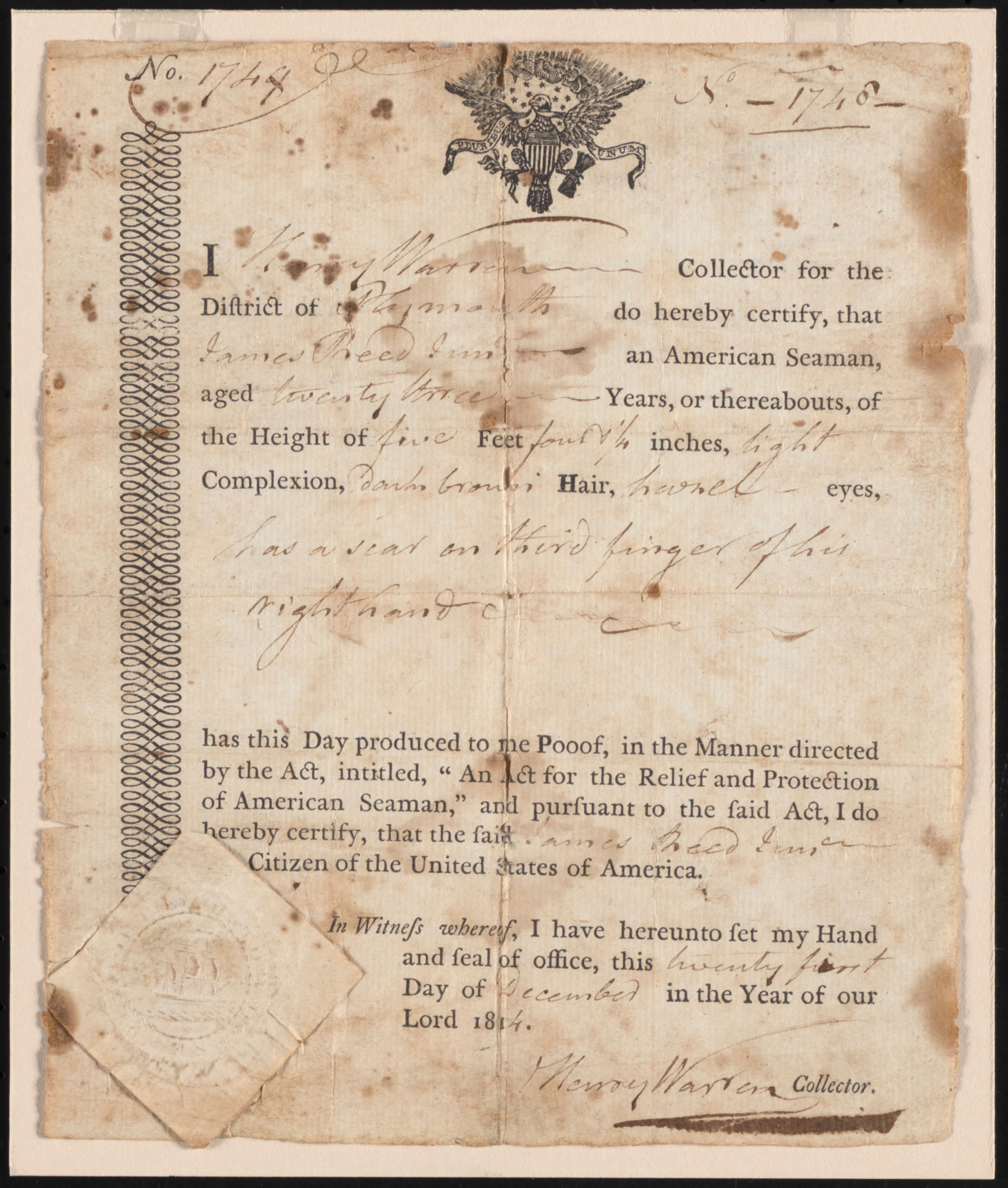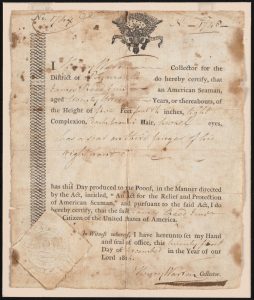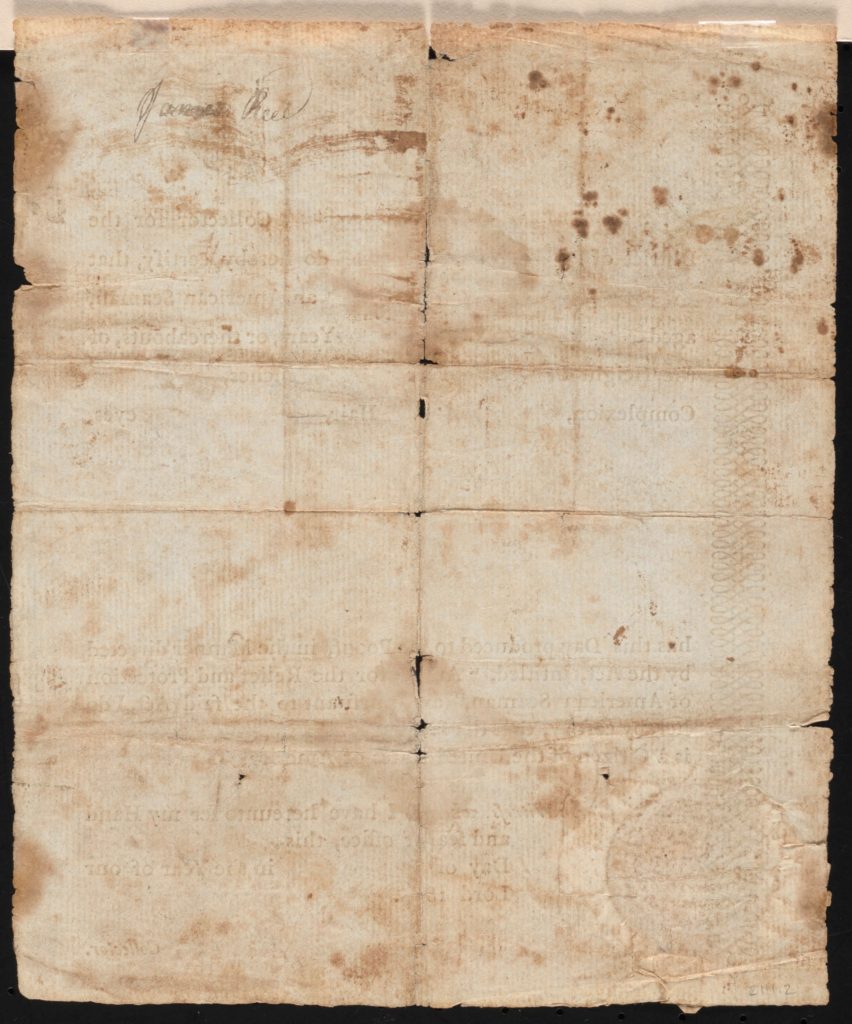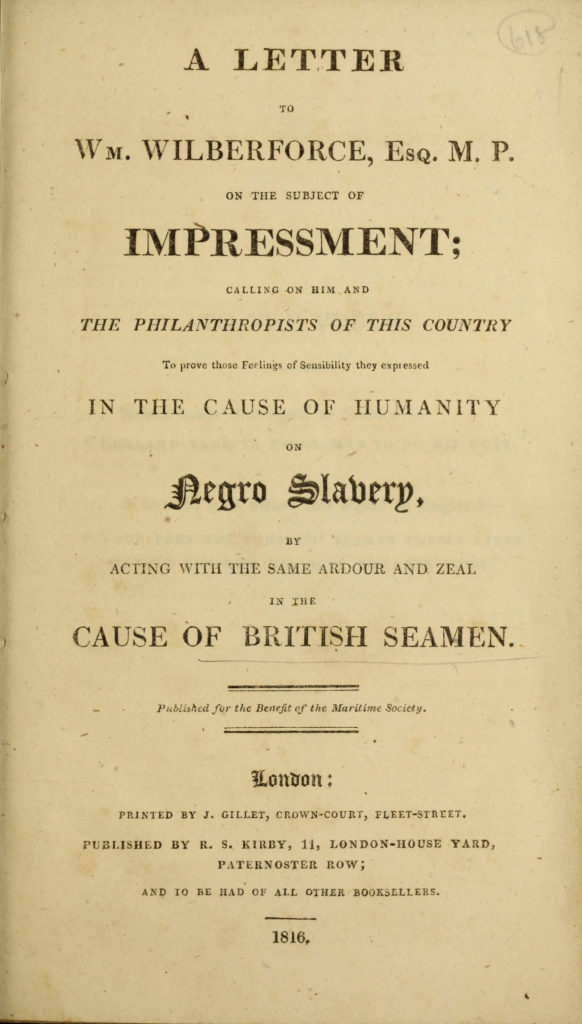





Seaman’s Protection Certificate for James Reed, Jr., December 21, 1814
On May 28, 1796, “An Act for the Protection and Relief of American Seaman” was passed by the United States Congress. This act provided certificates for sailors as proof of their United States citizenship and was intended to help protect American sailors from the British practice of impressment, or the seizing of men and sailors for service in the Royal Navy.
The certificate was obtained from a customs collector for a service fee of 25 cents. The sailor needed to provide proof of citizenship – often a notarized affidavit, signed by the sailor and a witness, which attested to the sailor’s American citizenship. The pre-printed protection certificate was then filled out and signed by a customs collector, with a brief physical description of the individual, including any distinguishing scars or tattoos. In the case of James Reed, Jr., he was 23 years old, 5 feet 4 ¼ inches tall, with a light complexion, dark brown hair, hazel eyes, and had a scar on the third finger of his right hand. This form is embossed with the Seal of the Plymouth Custom House in Massachusetts.
Because of the ease by which one could acquire a certificate, they were sometimes disregarded by the British as invalid. Any sailor believed by a Royal Navy officer, when boarding an American merchant ship, to be British could be taken, resulting in the impressment of American and other foreign citizens into the Royal Navy. The frequency of these occurrences increased in the early 19th century as Great Britain, embroiled in a decades-long war against France, became increasingly desperate for able-bodied seamen to man its ships. The considerable tension caused by this practice played a key role in the United States’ decision to declare war against Britain in June of 1812.
Creator
Henry Warren
Date Created
December 21, 1814
Medium
Paper, Ink
Dimensions
[H]8 in. [W]6 3/4 in.
Catalog Number
2111.2
Credit Line
USS Constitution Museum Collection.
Terms of Use


This work is licensed under a Creative Commons Attribution-NonCommercial-NoDerivs 3.0 Unported License
